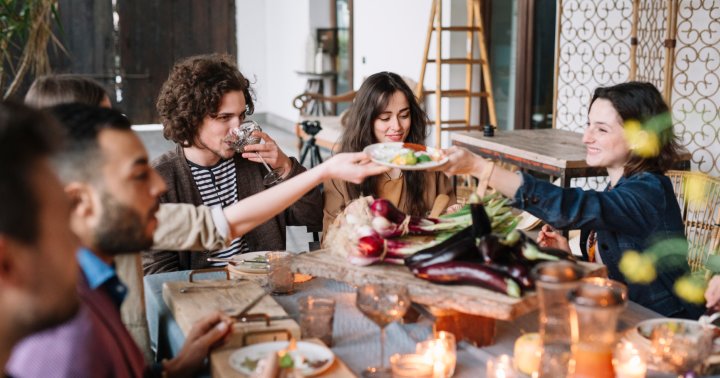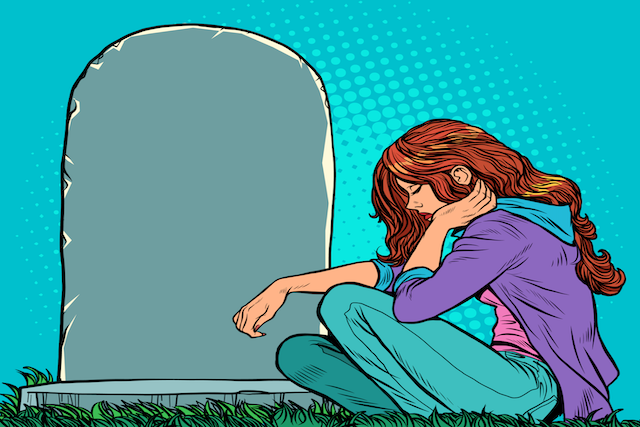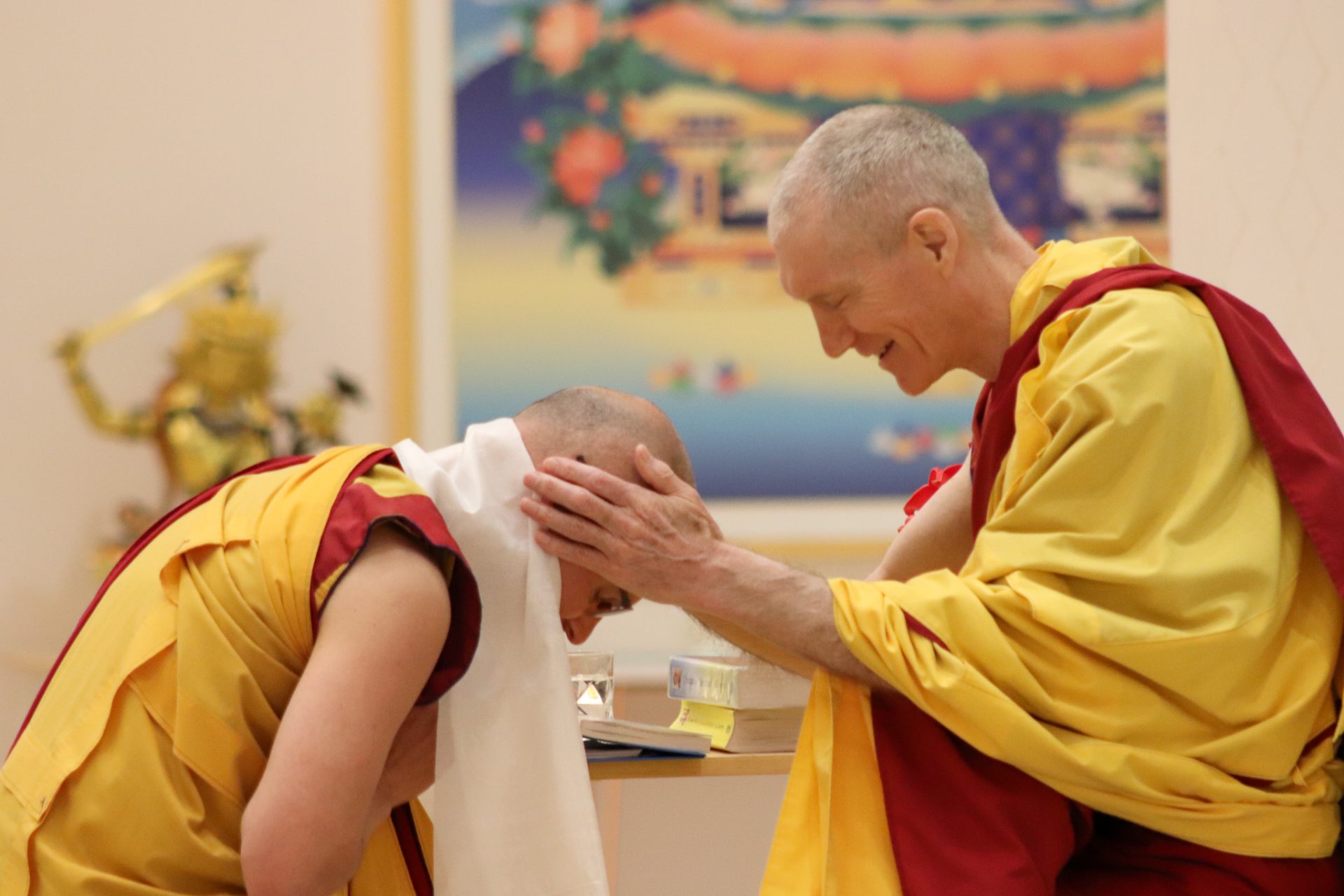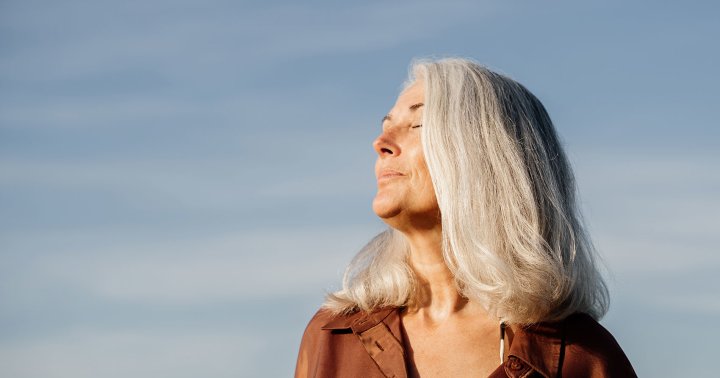Making Offerings to Our Ancestors
When we place offerings on the altar for teachers long past, do we understand what we are doing, or why? Zenju Earthlyn Manuel looks into the depths of that encounter between past and present. The post Making Offerings to...
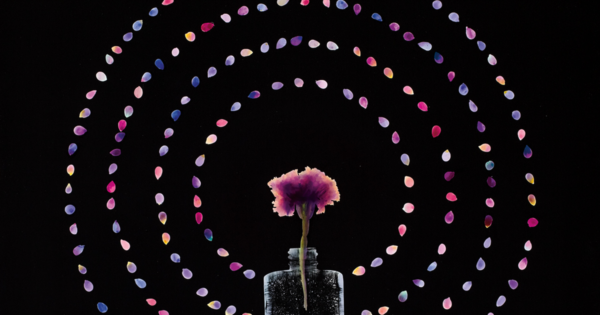
When we place offerings on the altar for teachers long past, do we understand what we are doing, or why? Zenju Earthlyn Manuel looks into the depths of that encounter between past and present.
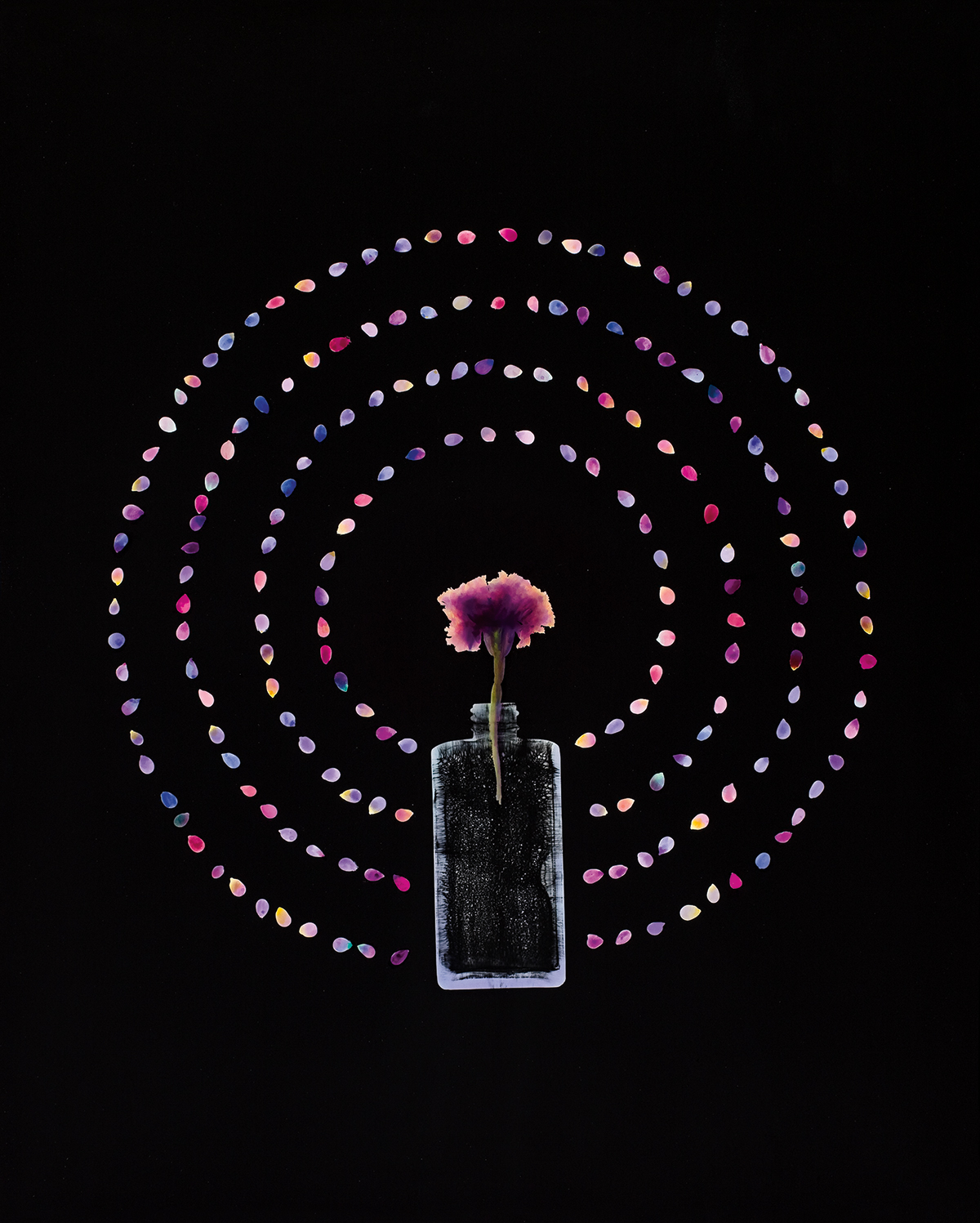
“Flower In Glass 5,” 1981. Painted photogram by David Lebe. davidlebe.com
For eons across spiritual, cultural, and religious traditions, people have made offerings in honor of ancestors. It is a critical step before partaking in any ritual or ceremony. In essence, the people, teachings, and the land that have sustained the wisdom tradition are to be honored prior to the activities in which the spiritual community will participate, heal, and transform. Making offerings to ancestors is a wordless expression of devotion to awakening and an acknowledgment of the earth that supports us.
When making offerings, the persons making them also receive what is given. For example, offering water may bring a calm mind, flowers a sense of beauty. Incense helps connect you to the earth, while firelit candles create illumination and symbolize destroying the darkness of ignorance. Inherent in each offering is a simultaneous giving and receiving of these gifts.
Central to the ceremonial life of most, if not all, Buddhist traditions are ritual offerings to ancestors. Food, flowers, water, incense, rice, sweets, tea, sculpted offerings, and other significant items are given to invoke and honor the ancestors of the lineage or school.
In making offerings to ancestors, we are acknowledging all that came before us, including plants, trees, four-legged animals, winged ones, and those that live in water. We are being led to an alignment with the unseen.
At Zen temples and monasteries, it is a daily practice to give gratitude for the inheritance that has sustained the teachings, the sangha, and one’s life. Prior to the opening of the morning sitting and service, offerings of incense or flowers are made at various altars throughout the temple and temple grounds. This is done just before dawn while the aspirants are seated in silence. Commonly the teacher makes offerings on their behalf, and this is the reason it is important to arrive early to the zendo. The heart of the teacher, the heart of the aspirants, and the offerings come together in ceremony to honor the ancestors and the teachings. If one is sick and can’t come to the zendo, then energetically receiving the offerings from bed is most important to recovering and returning to the daily ceremonies for the whole of one’s life and the community.
Although the dailiness of rituals of offering was part of what attracted me to Zen, I have come to see that repetition comes with its own risks. At times, it can feel there is more attention to routine rather than reverence of making offerings to ancestors—ancestors of the East as well as the ancestors of all who are dedicating their lives to awakening. The teaching is to bring one’s whole life and whole heart to the path. Such giving of one’s life is symbolic of the actual sacrifices historically found in many spiritual and religious traditions, including the sacrifice of Jesus Christ to save humanity, the piercing of flesh as an offering in Lakota Sundance ceremonies, or the sacrifices of animals in many indigenous sacred rites.
The Zen tradition contains a number of its own such stories. The Chinese monk Huineng (638–713) offered his life when he discovered his teacher, Hongren (601–674), was dying. Huineng felt that he should die before his teacher and so made a gesture of self-sacrifice in hopes to sustain the teacher and the teachings for as long as possible. In the end, he became the successor of Hongren’s esoteric teachings as found in the Platform Sutra.
Another famous Zen story of offering one’s life is that of a Chinese monk named Huike (487–593). A celebrated scholar, he abandoned the intellectual knowing of Zen to become a monk. His desire to experience the depth of the teachings was so great, he begged Bodhidharma, the teacher who had come from India to China, to take him on as a student. Huike sat outside for many days in the snow, pleading each day for Bodhidharma to become his teacher. Eventually, Huike cut his arm off to demonstrate the seriousness of his intentions. Upon sacrificing his arm, he was accepted as Bodhi-dharma’s first disciple.
Years later, Bodhidharma asked Huike what he had attained. Huike simply bowed in silence, revealing his understanding of Bodhidharma’s wordless teachings.
Whether or not Huike actually cut off his arm or suffered in the snow for days, the story makes clear that entering a path of Zen requires commitment from the depth of one’s whole life, giving the whole heart in order to experience the wordless expression of life. While there is no offering of the literal body as a sacrifice in Zen ceremony and ritual, one is offering oneself, symbolically, for the sake of awakening—the shamanic experience.
Seen against this background of bodily sacrifice and wholehearted commitment, it becomes clear that, in Zen, the daily offerings of rice, incense, tea, flowers, chants, and candlelight are symbolic of the body, which is symbolic of the earth. To make offerings to ancestors, to awakened ones, to wisdom holders who have come before us, is to bring that wisdom forth into our lives. In making offerings to ancestors, we are acknowledging all that came before us, including plants, trees, four-legged animals, winged ones, and those that live in water. Making offerings is an act of spirit through our bodies. We are not doing something; we are being led to an alignment with the unseen, suchness, the inexpressible, and the unsurpassable.
We do not make offerings to ancestors for our own sake. We make offerings for our families and communities, through our bodies. Others are inherently with us, as we would not be on the planet without them.
Ancestors are everyone and everything that existed on the planet before your birth. Ancestors can include the earth, moon, sun, and stars. They can include the people in your blood lineage (loved or unloved). Included are those we want to disown because we feel they did not walk with integrity or were harmful to others. Their “wrongful actions” have something to do with how we personally and collectively live, and they too are ancestors. Ancestors are also people in the lineage of your spiritual practice, and beings in the lineage of life itself.
All spiritual and religious paths are ancestral. Buddhism is an ancestral practice in which the Buddha is the most revered ancestor. But even the Buddha knew himself to be in a stream of ancestors, also known as buddhas. There were buddhas before the one Buddha who is exalted today.
When we bring in the ancestors at the beginning of a ritual or ceremony, we are starting with the bones. The bones, in this writing, are symbolic of wisdom. In some indigenous cultures, bones are said to hold memory. It is not our brains that hold the remembrance of human life before our births. The memories in the bone can be stirred or rattled, as they say, through ritual and ceremony. Through our bones, we can access wisdom that has been passed from ancestors to the present. Don’t archeologists look to the bones of people from ancient cultures to discover stories about those who lived before our time? Since life throughout time is marked on the bones, it is certain that we hold the past; the wisdom of the past is within us.
The bones of Zen include the stories, culture, and tradition of those who have walked the path for thousands of years. My bones are rattled in Zen rituals and ceremonies. When I say that, I am saying that a deep knowing comes through in tears, a knowing of myself as something beyond physical existence. I often do not know the reason for the tears or chills other than the sweetness that comes with bowing, chanting, and making offerings. Therefore, I make offerings slowly and with breath, to allow what needs to come through for the benefit of all. In the process, I remember through my bones the ancient way of ritual and ceremony. I never would have thought Zen practice could bring tears. But my bones knew something I didn’t.
Honoring Zen Ancestors
Whose bones do we acknowledge in communal Zen ceremonies? In the chanting service that takes place every morning at Zen monasteries and temples, aspirants chant a long list of the names of ancestors from India, China, and Japan. When chanting these names, we are honoring those who upheld the teachings that opened doors to awakening throughout time. We are making a connection to the ancient teachings that were embodied in them and perhaps now live in our bones.
Today, many people engage Zen practice without any acknowledgment of the ancestors of the tradition. Not acknowledging them creates a separation from those who brought us this practice of awakening. In the disconnection, the act of making offerings can become routinized, losing its significance and heart. The collective action of awakening is lost.
Perhaps one aspect of this disconnection is ethnic or racial. Whether from a sense of superiority, inadequacy, or self-consciousness, some of us energetically or literally separate ourselves from the act of making offerings because of not being Japanese, Chinese, Vietnamese, or Korean. Many who are not Asian have practiced Zen for decades, without regard to the people and the land from where the teachings emerged. Embracing Zen without taking steps to honor the bones of the ancestors in the lineage is a form of appropriation. When we ignore the bones, we appropriate. With appropriation, we don’t see the practice as one of enhancing interrelationship but one of personal improvement. We don’t recognize the bones of Zen practice as embodying true connection among us. And we don’t see that there is an opportunity in ritual and ceremony to activate justice through collective awakening with those who were here before our birth.
Buddhism arose from the flames of suffering among the people of India. It emerged from the suffering Buddha saw among his Shakya people—the poor, the aged, those dying from neglect, and all those he felt needed the kind of liberation that he discovered. It is important to remember that ritual and ceremony arose in Buddhism because it was the way an ancient people attended to their suffering.
From Patriarchs to Ancestors
Zen ancestors are traditionally called “patriarchs,” and so perhaps it is not surprising that we find patriarchy in the practice. In Zen centers in Japan and the United States, people traditionally chanted a lineage that included only those who are considered male (some still do). More recently, however, a host of transmitted Zen teachers have researched and have begun chanting a lineage of women ancestors. It begins with the women in Buddha’s family: his aunt Mahaprajapati, who raised him; Mitta, his mother-in-law; and Yasodhara, his wife and cousin. This lineage is now chanted in many Zen centers in the United States. At the same time, there remains opposition to chanting the lineage of women. There are those who still prefer only to chant the male lineage, which starts with Bibashi Buddha, one of the seven buddhas to Shakyamuni Buddha, and moves onward through a list of legendary and historical individuals stretching up to the present.
In making offerings to Buddha, one is making offerings to one’s own buddhanature, to one’s own capacity to awaken.
In my view, when the term “ancestor” is used instead of “patriarch,” it broadens the lineage to include ancestors of all genders and deepens the significance of offerings being made in ceremony. The use of “ancestor” also broadens our conception of who is a holder of Buddha’s wisdom and who acts on behalf of everyone while making offerings to ancestors. Being inclusive of all ancestors is one way of utilizing Zen practice to eliminate oppression among us.
There is a field of all awakened ones, on every continent. We are making offerings to the awakened ancestors of all living beings. It is a ceremonial gesture to enact wellness and liberation for all—not only Buddhists or those in the closed quarters of Buddhist monasteries and centers.
Often when I speak of ancestors in Zen Buddhist communities, folks think of the indigenous cultures of other continents. They think jungle, primitive, primal. They may think, “No, not us. That’s not what we do here in Buddhism.” This rejection causes an immediate severance from ancient practices, practices that are at least eight thousand to ten thousand years older than Buddhism and are the roots of Buddhism. When I notice such intentional turning away from the notion of ancestors—when someone says they don’t understand this “ancestors stuff”—I always point out the making of offerings to the great ancestor Buddha.
Shakyamuni Buddha is an ancestor to whom we make daily physical offerings in Zen. While we are not worshipping Buddha, we are acknowledging the teachings that came through him. And, moving to the transpersonal sense, we make offerings to the lineage of Buddha across all genders and in all places and times.
From a shamanic perspective, consider that the ancestor Shakyamuni Buddha was described in early Buddhist literature as having magical powers. Those powers were often what drew people to him. In the modern world, with its preference for rational and secular explanations, the presence and celebration of these powers in the sutras has often been seen as embarrassing and written off as unnecessary cultural trappings. Fortunately, there are some texts left that provide evidence of Buddha as shaman and seer.
Many Zen practitioners and teachers do not see Buddha as a shaman, but look closely at some of the elements in the story of his awakening. The Buddha is said to have lived on one grain of rice per day during his ascetic period; to have sat in the elements, barely clothed for days; and to have returned as a teacher filled with timeless teachings that he gathered from lucid dreams. Reflecting on this story, I see the Buddha as a dreamer who taught not from his intellect but from the wisdom of his quest, as would any practitioner of the earth. We can look at those stories as myths or exaggerations and dismiss their meanings; we can take them as culturally relative stories crafted according to the expectations of listeners from that time. But I think it is worthwhile to look at the implications of the stories when taken literally.
I feel, however, that the real magic is not in honoring the historical Buddha as a shamanic ancestor, though that is an important step. It is in the practice of experiencing Buddha as a reflection of our own magical or enlightened nature. In making offerings to Buddha, one is making offerings to one’s own buddhanature, to one’s own capacity to awaken. In Zen, it is said, “If you see the Buddha, kill him.” This points to a final liberation, the emptying of substance from what we think of as real—even sacred concepts like “buddha.” Another popular teaching is, “A painted rice cake does not satisfy hunger,” which is to say everything is a painting, including Buddha—the reality even of Buddha is constructed.
The statue of Buddha is a mirror image of our own essential lives, and I believe this is the reason so many people, whether Buddhist or not, include a statue of Buddha in their homes. Seeing an image of the Buddha is a way of accessing the silence and stillness that is innately within us. Likewise, when we see the rituals involved in honoring Buddha, we see ourselves, and this creates a diverse imagery of Buddha, with different ways to access what we need for our particular lives. So, when making offerings, we make them to a diverse buddhanature.
There is a beautiful song in the African Malawi culture that represents seeing buddhanature in each other and honoring each other. It is sung while facing another person. You sing to the person that you see them—“I see you”—and in turn, they do the same. When one person acknowledges that they see the other, it is a ritual of mirroring, of empowering. And it supports awakening to the reality that there isn’t only my life but also that there is life. There is valuing life. We honor that life in ritual and ceremony when we make offerings.
When we make offerings to the ancestors of our lives—be it the bloodline of our relatives or the lineage of our spiritual community, or be it offerings to animals, trees, plants, moon, or sun—we are making a mark in the world. When we offer ourselves, our lives, to a practice of awakening, we are making a mark of awakening for all.
Excerpt from The Shamanic Bones of Zen: Revealing the Ancestral Spirit and Mystical Heart of a Sacred Tradition, by Zenju Earthlyn Manuel (Shambhala Publications, 2022)

 Astrong
Astrong 








